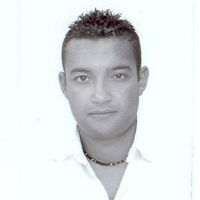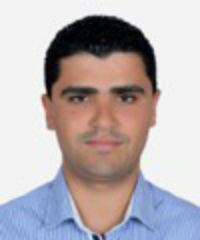Tutorials CIoT 2018
Title: Cloudification of the Internet of Things with OCCIware
Abstract: This tutorial covers the cloudification of the Internet of Things, i.e., the marriage of the Internet of Things (IoT) and Cloud Computing. On the one hand, data collected by IoT sensors are sent to big data analytics running in the clouds. On the other hand, IoT actuators are orchestrated (controlled) by business processes running in the clouds. However, these two converging scenarios are tricky to implement as both the IoT and Cloud Computing suffer from a lack of a standard networked API for managing IoT actuators/sensors and cloud resources. Then cloudified IoT applications must deal with the extreme heterogeneity of both IoT and Cloud Computing technologies.
Fortunately, there exists an open cloud standard called Open Cloud Computing Interface (OCCI) to address heterogeneity, interoperability, integration and portability in Cloud Computing. OCCI comprises a set of open community-lead specifications delivered through the Open Grid Forum. In a nutshell, OCCI is a RESTful Protocol and API for all kinds of management tasks on any kind of cloud resources, including Infrastructure as a Service (IaaS), Platform as a Service (PaaS), Software as a Service (SaaS), and potentially Everything as a Service (XaaS) from hardware resources to business applications .
Based on the OCCI standard, the OCCIware funded project (see www.occiware.org ) develops an open-source, model-driven, and reference toolchain for modeling, developing, deploying and managing Everything as a Service with OCCI. The OCCIware tool chain is implemented on top of the Eclipse Modeling Framework (EMF) and its associated technologies such as Ecore, OCL, Acceleo, Xtext, and Sirius. This tool chain has already successfully been applied on VMware as a Service, OpenStack as a Service, Docker as a Service, Big Data as a Service, Linked Data as a Service, Mobile Robotics as a Service, and IoT as a Service.
This tutorial shows how the OCCIware tool chain can be practically used for the cloudification of the Internet of Things.
Speakers:

Walid Gaaloul (Telecom SudParis, Université Paris-Saclay, France)
Biography: Walid Gaaloul is professor in TELECOM SudParis an engineering school of Université Paris-Saclay. He is member of the Computer Science Departmentand the CNRS research laboratory SAMOVAR. Before joining TMSP, he was a researcher at the Digital Enterprise Research Institute (DERI) and anadjunct lecturer in the National University of Ireland, Galway (NUIG). Heholds an M.S. (2002) and a Ph.D. (2006) in computer science from theUniversity of Lorraine-France. He was a junior researcher in the Lorraine Laboratory of IT Research and its Applications (LORIA-INRIA) and ateaching assistant in the University of Lorraine-France. His research interests are on Business Process Management, Service Oriented Computing, Cloud Computing, Process intelligence, and semantics for B2B Integration. Walid Gaaloul has published over 100 research papers in these domains. He serves as program committee chair, and member, and reviewer at many international journals and conferences and has been participating in several national and European research projects.

Faiez Zalila (Inria Lille - Nord Europe, France)
Biography: Faiez Zalila is postdoctoral researcher at Inria Lille - Nord Europe within the Spirals research team. He is interested in software engineering,including model driven software engineering (MDE), software languageengineering (SLE) and software validation & verification (V&V). He received the Ph.D. degree in computer science from National Polytechnics Institute of Toulouse (INP Toulouse) in 2014, and the M.Sc. degree in computer science from the University of Paul Sabatier Toulouse 3 in 2010.His thesis focused on the integration of formal verification activity for domain-specific languages. In 2015, he joined the LAAS laboratory, as postdoctoral fellows, and worked on the development of the verification toolchain for the architectural language AADL. In 2016, he became a postdoctoral researcher at the IRT Saint Exupéry (IRT AESE). He designedand implemented an interactive step-by-step simulator for the Fiacre formal language. InFebruary 2017, he joined the OCCIware project and contributes on the definition and the development of the OCCIware Studio 2.0.
Intended audience
This tutorial addresses different audiences: IoT providers that want to offer in an easily and interoperable way IoT as a service to their customers; IoT application developers that use cloud services to run their IoT applications in the clouds and want to manage any kind of available cloud resources; researchers and practitioners who want to discover the state-of-the-art approach for the cloudification of the Internet of Things.
For the hands-on part of the tutorial, attendees should know the Eclipse environmentand the Java programming language.
Tutorial content
This tutorial is composed of two main parts:
- the presentation part (1 hour) gives an overview of the cloudification of Internet of Things, cloud computing principles, cloud offers and cloud standards. This parthighlights the extreme he terogeneity in the IoT and Cloud Computing, and the needfor a standard networked API for managing Everything as a Service from IoT andcloud resources. Then this tutorial presents the OCCI standard, its core concepts,and review the usage of OCCI in real deployment contexts. Thirdly, this tutorial presents the key features of the OCCIware tool chain and show concrete usages for managing datacenter resources, Docker systems, cloud applications, and MobileRobots as a Service.
- the hands-on part (2 hours) allows attendees to practically use the OCCIware tool chain to design, develop, deploy and manage a toy example of the Internet of Things(IoT), aka a client/server IoT light application. We will bring the complete OCCIware tool chain to the attendees of this tutorial via a USB key, and then we will together use the OCCIware tool chain. The objective is that the end of this tutorial attendees will acquire the ability to use OCCIware for their own IoT resources as a service when come back to their office.
Specific logistic needs
- power supply for attendees’ laptops
- office tables for attendees
- network connectivity if possible
Materials
This tutorial is a revised version of the tutorial we presented at the IEEE ServicesConference Federation (SCF 2017) including IEEE 2017 ICWS / CLOUD / SCC / BigDataCongress / EDGE / ICCC / ICIOT / AIMS / SERVICES conferences, June 25 - June 30,2017, Honolulu, Hawaii, USA. See http://www.iciot.org/2017/tutorial.html#t3.
The slides of our SCF tutorial are available at https://drive.google.com/file/d/0B-sPFDvrFZo8MTRocjZRZm5MWjQ/view?usp=sharing .New slides will be added about the cloudification of the Internet of Things and the usage ofthe OCCIware tool chain for managing Mobile Robots as a Service.
The materials for the hands-on part of our SCF tutorial is available as a zip file at https://drive.google.com/file/d/0B7zqdAuZr708ZFdoVEtvaUJ1V2c/view.These materials will be shared via USB keys with attendees.
It contains:
- OCCIware-Tutorial-2017.pdf : a document which describes the hands-on activity. Itis divided into 12 sections. Each one allows to experiment a specific feature of theOCCIware tool chain.
- OCCIware Studio folder: contains the OCCIware Studio product as a compressedfile. It is provided for Linux, Windows and Mac OSX platforms.
- JDK folder: contains the Java SE Development Kits related to Linux, Windows andMac OSX platforms.
- Light.gif : An icon which will be used to customize the graphical designer of the OCCIlight extension.
- lightclient.jar : a library defining the client part of the light client/server application.
- lightserver folder: the application defining the server part of the light client/serverapplication.
- Curl folder: It provides the cURL tool, a library and command-line tool for transferringdata using various protocols .
- Curl scripts folder: It provides the curl scripts which will be executed by theattendees during the hands-on activity.
- MartServer folder: It contains the dependencies of the OCCIware Runtime calledMartServer .
Two videos of the hands-on activity are available at https://drive.google.com/open?id=0B7zqdAuZr708d3p0WkZTV1ZDZW8.
Title: Wireless Body Networks for Healthcare
Abstract: Nowadays, interests in Healthcare Monitoring System (HMS) based on Wireless Body Area Network (WBAN) and Cloud computing have grown considerably due to the increasing aging population. HMS expected to reduce healthcare expenses by enabling the continuous monitoring of patient health remotely during their daily activities. From a medical point of view, WBAN will emerge as a key technology in providing real-time health monitoring and diagnoses of many life threatening diseases (Heart attack, Stroke, Epilepsy, Diabet, …). Accordingly, several studies have been done in this area and already various journal and conference papers focusing either on WBAN or on cloud-based healthcare services. Nevertheless, there is no extensive coverage on the HMS based on WBAN. This tutorial will focus on the WBAN in terms of emerging wireless technologies (supporting infrastructure and technology), HMS architecture and its applications (Continuous Monitoring and Assisted Living) and challenge design issues related to WBAN (energy-saving MAC and routing layers as well as security and fault management). Furthermore, this tutorial can be considered as a technical overview of the state-of-the-art in the WBAN and HMS fields.

Ahmed Mehaoua (University of Paris Descartes, France)
Biography: Ahmed Mehaoua received the M.Sc. and Ph.D. degrees in computer science from the University of Paris, Paris, France, in 1993 and 1997, respectively. He is currently a Full Professor of computer networking in the Faculty of Mathematics and Computer Science, at University of Paris Descartes, Paris, France. He is also the Head of the Department of Multimedia Networking and Security at the LIPADE, a governmental computer science research center in Paris, France. His research interests include video communication, resource optimization, security and anomaly detection in wireless networks.